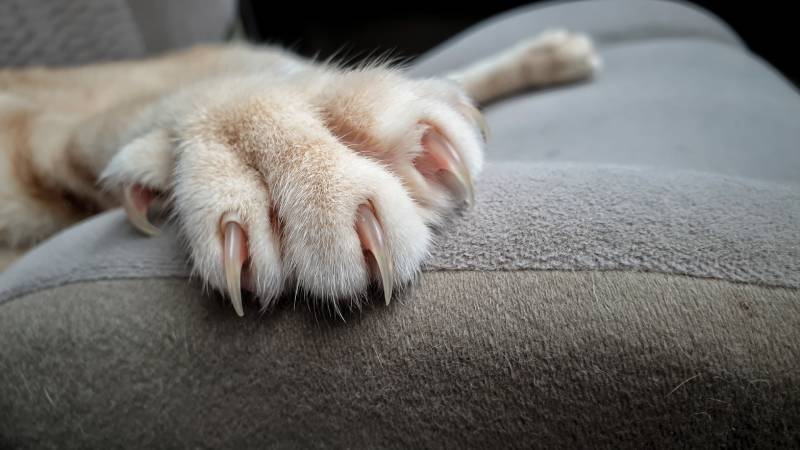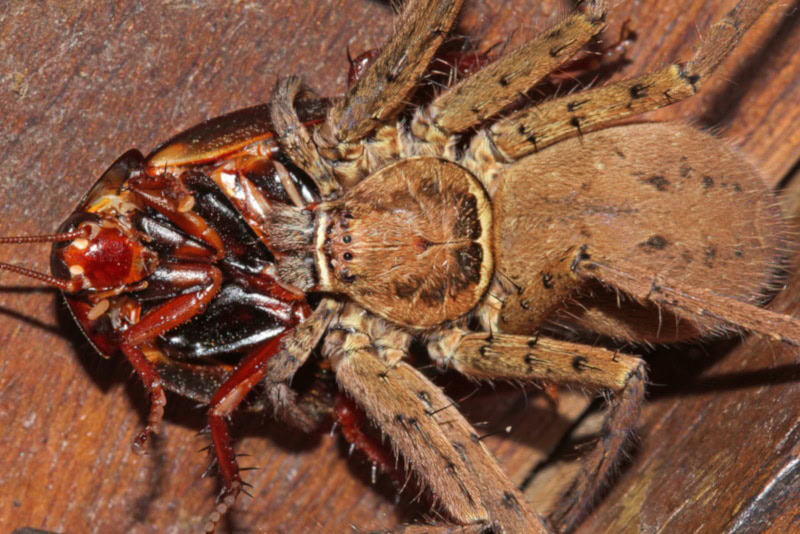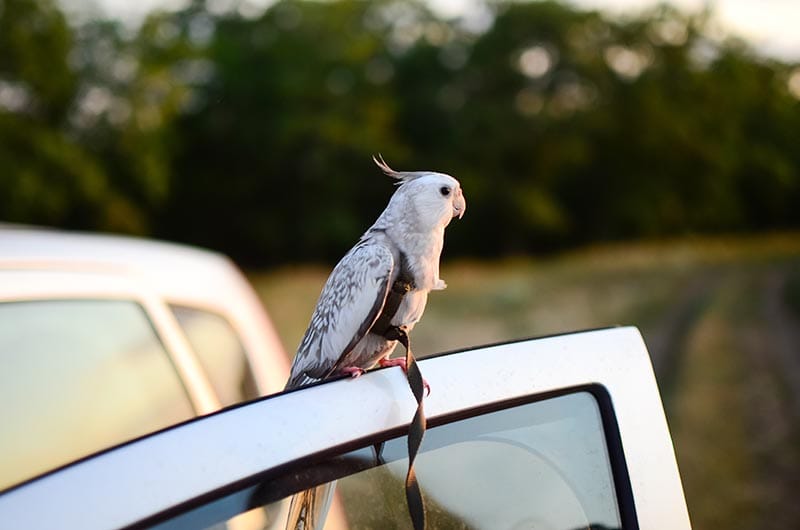VET APPROVED

The information is current and up-to-date in accordance with the latest veterinarian research.
Learn more »Click to Skip Ahead
Your cuddly cat doesn’t always have claws sticking out of the end of their paws. They remain safely tucked away when not in use. They only retrieve them when they need to defend themselves, hunt, climb, dig, or grab something.
But do all cats have these retractable claws? The answer is yes; all domestic cats, regardless of breed, have fully retractable front claws.
If you find your cat’s retractable claws a bit confusing, read on to learn interesting facts about its anatomy. We will also discuss the retractile claw mechanism and share tips to keep those daggers healthy.

The Anatomy of a Cat’s Claws
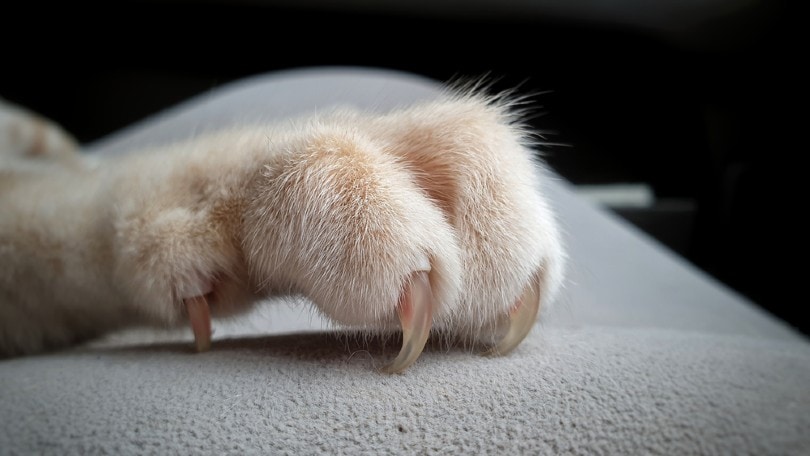
Cats normally have one claw on each digit and a dewclaw positioned a little higher up the leg. Although these claws appear at the tips of the toes and are made of keratinized dead cells, they are fundamentally different from human nails in their shape and functions.
A cat’s front claws are attached to the end of the toe bones and curve downward at the end.
They are also thinner towards the edges and act like weapons that can be retrieved from a sheath when needed. While the shape of the claws aids in catching, slashing, and holding prey, their elevated position ensures they retain their sharpness.
The Retractile Mechanism of a Cat’s Claws
The mechanics behind a cat’s ability to retrieve and retract its claws is relatively straightforward. The paws have muscles, ligaments, tendons, and phalanges (toe bones).
The distinctive shape of the middle and distal phalanges allows for pivoting of the claws when the paw is resting. This elevates them and reduces the risk of tear and wear when walking on hard surfaces.
Usually, a small tip of the claw remains outside the sheath of the skin, although you cannot see it because it is covered by fur.
When cats need to defend themselves, hunt, or use their claws in any way, they flex the muscles, tendons, and phalanges on their paws. The co-contraction of the extensor muscles and forearm flexor exposes the claws instantly and makes them available for use.
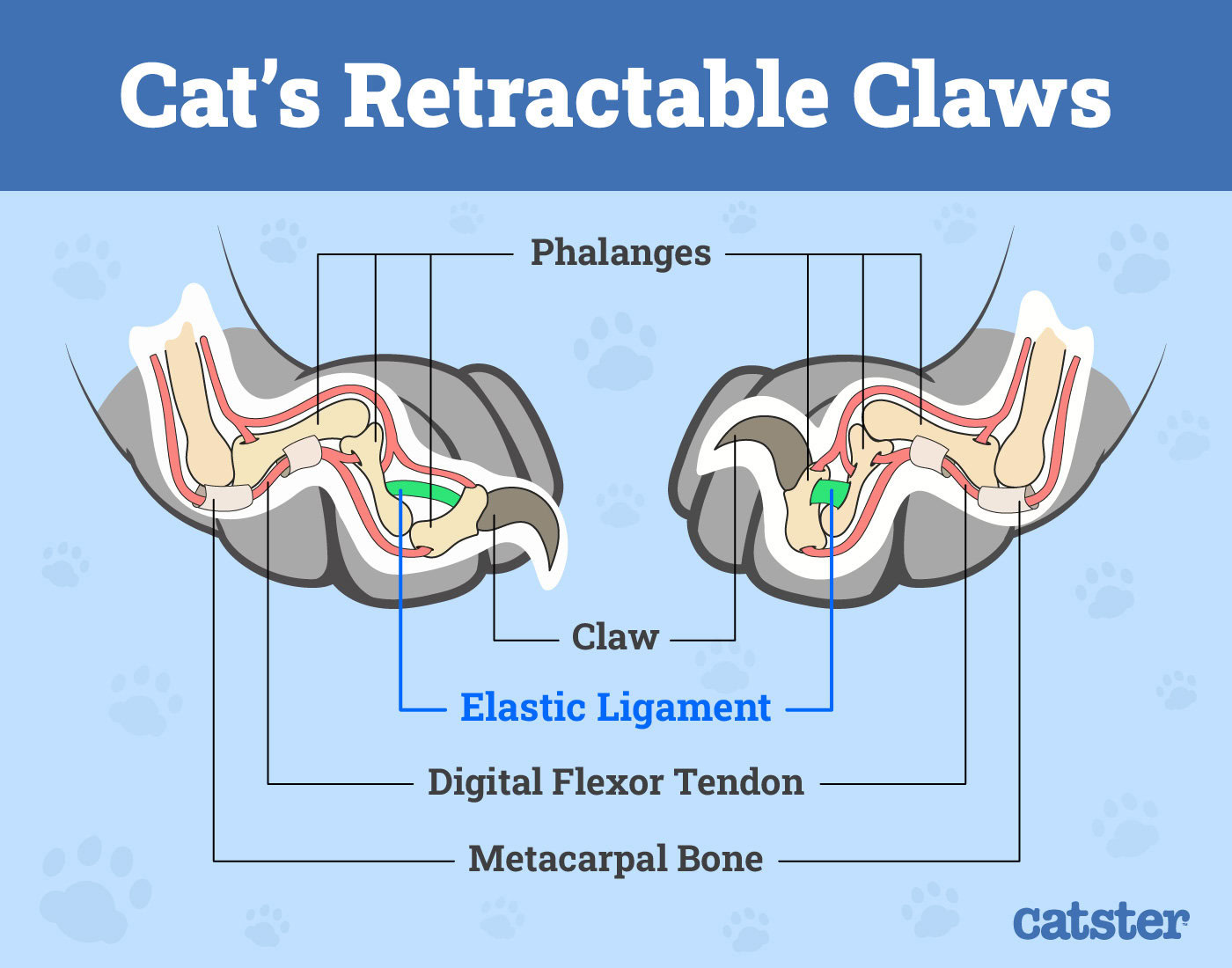
Are Kittens Born With Retractable Claws?
Like adult cats, kittens also have sharp claws. Surprisingly, their claws only become retractable when they become 4 weeks old. Older kittens will instinctually retrieve their claws in self-defense, or when they have a false perception of danger for example when you want to lift them but they don’t know it’s for a cuddle.
Do All Big Cats Have Retractable Claws?
Like domestic cats, most wild cats, including lions, tigers, leopards, and jaguars, have fully retractable claws. Their claws remain covered by a sheath of skin when not in use. They only retract them when they need to catch prey, scratch, climb or create traction with their feet.
Cheetahs are the only exception; they possess semi-retractable claws that only retract back a little.
The semi-retractable claws of cheetahs are a useful adaptation that creates extra traction as the cat moves at high speeds. They ensure a better grip on the ground when running, although this also wears them down.

Why Cats Have Retractable Claws
Contrary to what it may seem, your kitty’s sharp claws are meant to do more than rein terror on your furniture pieces. Retractable claws aid quiet movements, enabling your furry friend to tiptoe and sneak up on prey. This adaptation increases its survival in the wild, where it needs to hunt game.
Here are three other essential reasons why your cat needs its retractable claws.
1. Climbing
Cats are designed to climb beautifully, thanks to their retractable claws.
Those sharp daggers grab parts of the tree trunk, and they use their rear legs to push themselves upwards. Climbing gives them a vantage point to look down on prey, stalk it, and calculate the ideal time to pounce on it.
Moreover, the ability to climb allows cats to escape from potential predators. If your house cat feels threatened by a dog, for instance, they will run to anything they can climb vertically. This may save them from injury or death.
2. Hunting
Cats are among the fiercest predators on Earth!
Their basic anatomy, including their claws’ retractile mechanism, ensures they can survive in a wide variety of environments. Even calm and affectionate house cats have strong hunting instincts and can bounce to action under the right circumstances.
Retractable claws remain sharp because they are not subjected to regular tear and wear. When it’s time to hunt, your kitty can depend on that sharp set of in-built knives.
3. Defense Against Larger Animals
Although cats are deadly predators, they are prey to animals like eagles, coyotes, dogs, owls, hawks, and raccoons. Their claws are their main defense if they are in danger. Biting comes second when the kitty is heavily spooked or wants to express aggression.


Do House Cats Need Claws?
Cats need their claws for mobility, grooming, and balance. Although house cats don’t need to defend themselves or hunt, scratching things is an instinctive part of their nature that they cannot unlearn.
Although declawing cats is not illegal in all states, this does not deduct from the fact that it is a painful, cruel, and unnecessary procedure.
Cats engage in the scratching motion to promote nail health. They also scratch to mark territories, release pent-up stress, and stretch their backs and joints. If the damage imposed by your cat’s claws is getting on your nerves, the humane thing to do is to manage where and what they are allowed to scratch.
Consider placing scratching posts in different desirable locations, like spots close to windows. You could also use synthetic pheromone products to redirect the need to mark. Remember to use positive reinforcement strategies and offer lots of praise, treats, and cuddles when your furry friend refrains from scratching your favorite couch.
If you need help reducing your cat’s scratching, a veterinarian can offer guidance.

The 3 Easy Tips for Effective Cat Claw Maintenance
Although scratching can be destructive if misdirected, it is an innate cat behavior. It allows your furry friend to naturally maintain their claws, get a good stretch, and express feelings like excitement and discomfort.
Here are three tips to ensure your cats can scratch to their heart’s content without being destructive.
1. Start Nail Trimming Early
Your cat’s claws, just like your nails, grow continuously. It is vital to introduce cat claw trimming as early as four weeks to make your kitty accustomed to the routine.
Additionally, ensure you use the right trimming tools and techniques as recommended by your vet or a professional pet groomer. Trim your cat’s nails every two to four weeks, depending on its activity levels and how much they scratch to wear down their claws.
You can tell it’s time for another nail trim when the claws get too long and deeply curved. More frequent sessions are necessary for older, less active cats that tend to participate in less scratching.
Keeping your cat's nails trimmed is important, but it's no one's favorite task. You can make it easier with great clippers designed specifically for cats. We like Hepper's Cat Nail Clipper Set, a convenient combination of medium and small clippers that comes in a handy pouch. These sharp stainless steel clippers allow for precision trimming, with the added protection of built-in safety guards. Plus, there's a hidden nail file!
At PangoVet, we've admired Hepper for many years, and decided to take a controlling ownership interest so that we could benefit from the outstanding designs of this cool cat company!
2. Provide Plenty of Scratching Opportunities
Scratching is an instinctive behavior that helps cats maintain their nails in between trimming sessions.
If you don’t want them to scratch your furniture, you should provide plenty of scratching opportunities. Invest in appropriate scratching posts, pads, and toys and ensure they are strategically placed around your home.
It is crucial to consider your cat’s preferences before investing in a scratching post. Consider whether they fancy horizontal or vertical scratching, depending on whether they like stretching outward or upward.
If it likes both, make sure you invest in a scratching post and pad. Scratching toys are also ideal, especially for cats with mobility issues.
3. Redirect Destructive Scratching
Generally, cats love scratching furniture because they are sturdy and allow them to get a good grip and dig their nails into the fabric. You can redirect scratching to a post or pad by ensuring it is at least 32 inches tall or long.
Also, ensure it is covered by the right media. Some cats love scratching bear wood, while others prefer corrugated cardboard. If your pet prefers a firm fabric, invest in a scratching post covered by a sisal rope.
We're big fans of using cardboard as a material for cat scratchers, which is why it's no surprise that our favorite scratcher, the Hepper Hi-Lo Cat Scratcher, is made with cardboard. With a durable, sturdy, and modern-looking birch plywood frame, this scratcher is designed to make both cats and their hoomans happy. You can set it up in three different ways, too, to keep your cat fit and entertained. Click here to learn more.
At PangoVet, we've admired Hepper for many years, and decided to take a controlling ownership interest so that we could benefit from the outstanding designs of this cool cat company!
You could also take a step further and spray deterrents on the furniture pieces your cat prefers to scratch. This should safely aid in redirecting the scratching to the posts, pads, or toys.

Final Thoughts
Even your house cat needs their retractable claws for self-defense. Cats would likely feel defenseless without its in-built daggers if you have them declawed.
Investing in appropriate scratching posts, toys, and pads is a better alternative to declawing. Also, keep up with your cat’s nail-trimming routines. Their claws are a crucial part of their life and must be kept as healthy as the rest of the body.
- Related Read: What Is a Cat Paw Made Of? Our Vet Explains
Featured Image Credit: RJ22, Shutterstock
